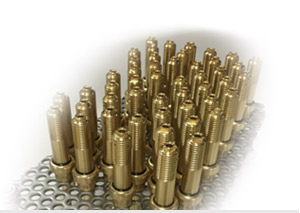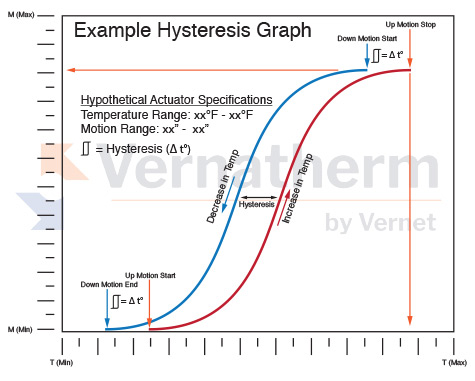Thermal actuators (Wax Motors)

A wax motor (thermal actuator) is a linear actuator that converts thermal energy into mechanical by exploiting the phase-change behavior of waxes.
Expansion rates in as little as 1% to as much as 25% in a temperature range anywhere between 30°F to 300°F (-1.11°C to 148.88°C)
Temperature Range: 30F - 300F
(-1.11°C to 148.88°C)
Working Stroke: .005" - .500"
(.127mm - 12.7mm)
Max Pushing Force: 15lbs - 70lbs
Request Quote
Available in a variety of sizes and configurations, our thermal actuators all function through thermal expansion. Our thermal actuators can be utilized in limitless applications from miniature to heavy duty. Our fast acting self-actuating actuators provide precise pushing forces and accurate travel distances.
Patented TechnologyOur patented high performance expansion material and willingness to blend you any temperature you want sets us apart from our competitors' inflexible policies and limited thermal abilities. With our actuators you are in complete control over what temperature range they perform at and to what degree. Every actuator we design is for the customer and to the customer's specifications.
PerformanceThe graphed performance curve below demonstrates what you would see on a typical thermal actuator performance curve. The variables on the performance curve are: Temperature Range, Extension Stroke, & Return Stroke.
CustomizationPlease keep in mind that the products on this page reflect standard actuator functions & features that may not fit directly into your application and will require modifications; this is normal and is to be expected. We also can accommodate any fastening method you need, standard threads, snap rings, custom design etc.
Engineering AssistanceIf you are unsure of what you need simply let our team of engineers work with you to solve your problems. Prior to any commitment we can provide samples for you to evaluate and qualify, giving you the confidence needed to move forward with your project.
QuotesWhen requesting a quote simply let us know how you want your thermal actuators to function based on the three performance ranges listed on the left and our engineers will guide you the rest of the way.
Classification & Anatomy
Every actuator designed and manufactured by Vernatherm by Vernet is specific to a customer; to simplify the selection process we have divided our actuator's abilities into 4 classifications ranging from light to heavy duty. What distinguishes actuators apart from each other is their physical size, piston extension, and force range.
Each actuator is constructed internally the same way, and functions through thermal expansion; use the diagram below to better understand how these devices function. Based on your design criteria and application these internal parts can vary in material to ensure compatibility.
Please note: Actuator "Class" info located below is intended for audience education; these classes are not tied to specific part numbers.
  |
Hysteresis - a definition
 "Hysteresis"
"Hysteresis"
Hysteresis is the temperature differential between the graphed upstroke and down stroke of a wax motor as a result through heating and cooling. Hysteresis is caused by the thermal inertia of the element and by the friction between the parts in motion internally.
Further Explanation
An actuator's piston extends when it senses thermal increase and retracts when it is cooled. The temperature points when this occurs are not identical. The difference between the two points is called "hysteresis". Hysteresis is deliberate and will prevent unnecessary switching/modulation between temperatures that frequently fall above and below a set point. Utilize the hypothetical graphed performance curve on the left to further understand this concept.
Controlling hysteresis
To a limited degree we can increase or decrease the hysteresis value to suit your application needs. These characteristics are eventually discovered when you work with our engineers. You do not need to know the value of hysteresis required by your application; samples will be provided along with engineering consultation. Simply Start The Conversation; Ask us a question. Click Here To Contact Us
Request Quote
